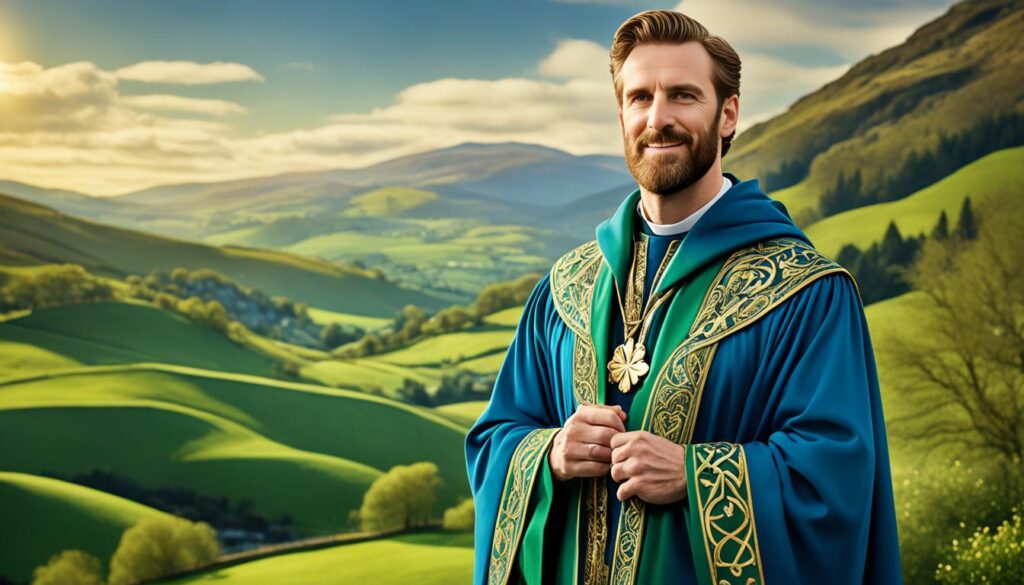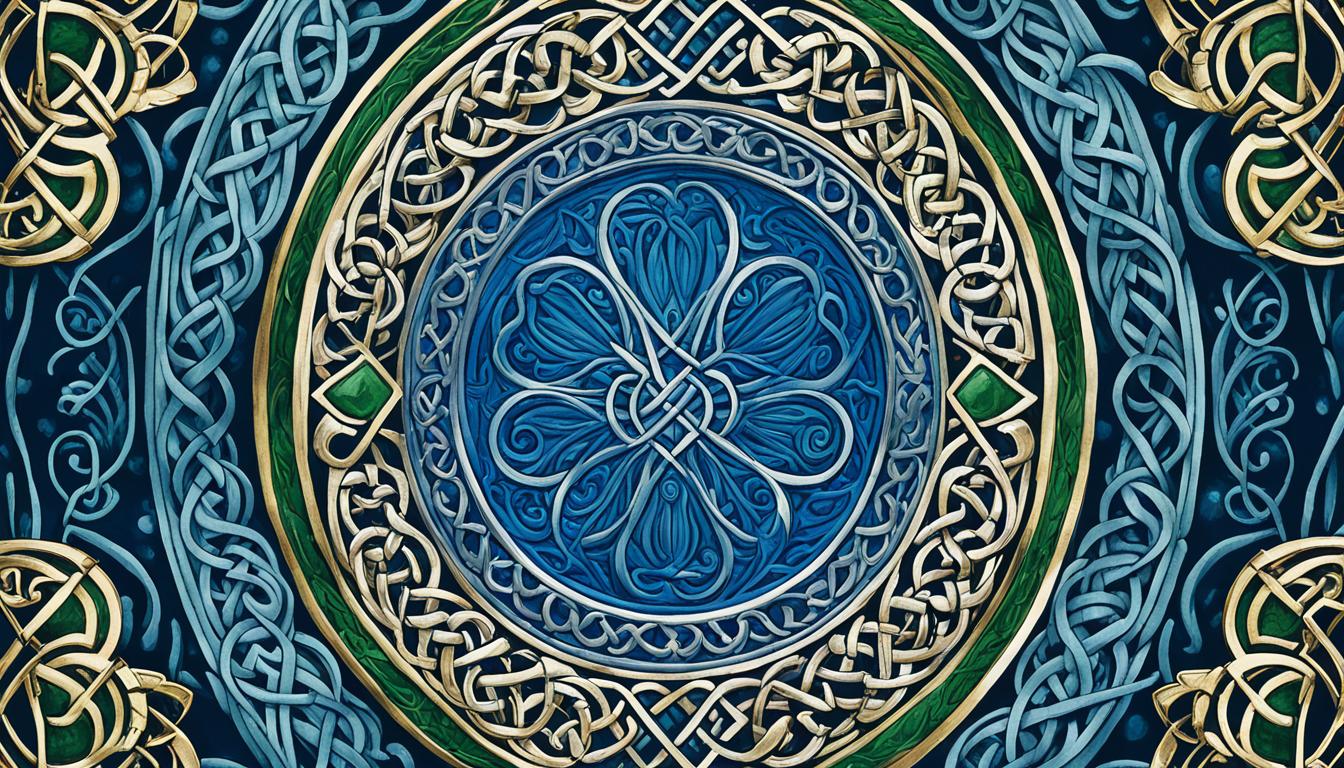Long before the vibrant green hues became the hallmark of St. Patrick’s Day, the patron saint of Ireland and the Emerald Isle itself were more closely linked to shades of blue. This fascinating aspect of Irish history reveals a deeper symbolism and cultural significance behind the colors associated with St. Patrick.
The earliest known artistic representation of St. Patrick, dating back to a 13th-century French manuscript, depicts the saint draped in a blue robe. This early portrayal hints at a time when blue, rather than green, was the color most closely tied to Ireland’s patron saint. The connection between Ireland and the color blue extends beyond St. Patrick, as evidenced by the actions of King Henry VIII in 1541. Upon declaring himself king of Ireland, Henry VIII bestowed upon the Irish kingdom a new coat of arms featuring a golden harp set against a rich, dark blue background.
The association between St. Patrick and blue continued to evolve over the centuries. In 1783, King George III of England established the Order of St. Patrick in Ireland, an order of knighthood whose members donned regalia in a distinctive shade known as “St. Patrick’s Blue.” This color symbolism further solidified the link between the saint and the blue hues that once dominated Irish iconography.
Key Takeaways
- St. Patrick and Ireland were historically associated with shades of blue before green became the dominant color
- The earliest known depiction of St. Patrick, found in a 13th-century French manuscript, portrays him wearing a blue robe
- King Henry VIII’s Irish kingdom coat of arms featured a golden harp on a dark blue background
- The Order of St. Patrick, established in 1783, had members wearing outfits in a shade known as “St. Patrick’s Blue”
- The color blue held deep symbolism and cultural significance in Irish history and its connection to St. Patrick
The Earliest Depictions of St. Patrick in Blue
Contrary to popular belief, the earliest depictions of St. Patrick show him adorned in blue garments, not the iconic green we associate with him today. A striking example of this can be found in a 13th-century image that portrays Ireland’s patron saint meeting the High King of Ireland, dressed in a resplendent blue robe. This color choice was not merely coincidental, as another 13th-century depiction also showcases St. Patrick resting on a rock, once again clad in blue robes.
The significance of the color blue in Irish mythology cannot be overstated. In ancient tales, the sovereignty of Ireland, known as “Flaitheas Éireann,” was often personified by a woman draped in a blue robe. This powerful symbolism was likely inspired by the 10th-century queen Gormfhlaith, whose name is a portmanteau of the old Irish words for blue (gorm) and sovereign (flaith). By depicting St. Patrick in blue, these early artists were drawing a direct connection between the saint and the sacred concept of Irish sovereignty.

The link between St. Patrick and the color blue extends beyond visual representations. In Irish folklore, blue was often associated with wisdom, trust, and loyalty – qualities that were central to St. Patrick’s mission of spreading Christianity throughout Ireland. By embracing the color blue in his garments, St. Patrick not only aligned himself with Irish cultural traditions but also embodied the virtues that would come to define his legacy.
As we explore the earliest depictions of St. Patrick, it becomes clear that the color blue played a pivotal role in shaping his image and symbolism. From the vibrant blue robes adorning his figure to the deep-rooted connections with Irish mythology and sovereignty, these early portrayals offer a fascinating glimpse into the complex and often overlooked history of Ireland’s beloved patron saint.
The Historical Connection Between Ireland and the Color Blue
Ireland’s association with the color blue dates back to the reign of King Henry VIII in the 16th century. In 1542, Henry declared Ireland a separate kingdom and granted it a unique coat of arms featuring a golden harp on a blue background. This marked the first formal use of blue in Ireland’s heraldry and began a lasting connection between the country and the color.
The link between Ireland and blue was further strengthened in 1783 when King George III established the Order of St. Patrick, a new order of chivalry for the Kingdom of Ireland. The official color chosen for this order was a lighter shade of blue, which came to be known as “St. Patrick’s Blue.” This distinctive hue has since been adopted by various Irish institutions and sports teams, such as the Dublin GAA county teams and the University College Dublin (UCD) sports teams, who proudly wear St. Patrick’s Blue and saffron in their uniforms.
The historical significance of blue in Ireland’s heraldry and the establishment of the Order of St. Patrick have solidified the color’s place in Irish culture and identity. While green has become more commonly associated with Ireland and St. Patrick’s Day celebrations in modern times, the deep-rooted connection between Ireland and the color blue remains an important part of the country’s heritage and tradition.
St. Patrick’s Blue Association: The Transition to Green
The iconic green color now synonymous with St. Patrick’s Day and Ireland has not always been the primary hue linked to the Emerald Isle. In fact, the transition from blue to green has been a gradual evolution over time. One popular belief is that St. Patrick himself used a shamrock in his preaching to symbolize the Holy Trinity of Christianity, although the first written account of this does not appear until 1726.
It was during the Irish Rebellion of 1798 that the clover truly became a symbol of Irish nationalism. The “wearing of the green” on lapels became a regular practice and soon spread to military uniforms as well. The term “The Emerald Isle,” now inextricably tied to Ireland’s lush green landscapes, can be traced back to a poem penned by Belfast native William Drennan in 1795.
As the association of Ireland with the vibrant green of its rolling hills and vales grew stronger, the historical connection to St. Patrick’s blue gradually faded. Today, green has become the de facto color of St. Patrick’s Day celebrations worldwide. In a nod to this tradition, the Irish Taoiseach presents a Waterford crystal bowl adorned with shamrocks to the US President in the White House each year on March 17th.

Leave a Reply